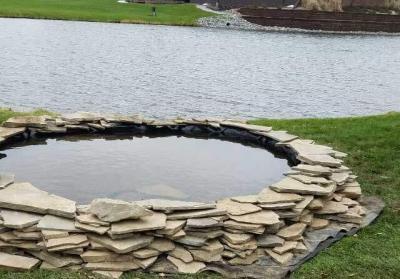 Toxic Blue-Green Algae Blooms in your pond – also known as Harmful Cyanobacteria Algae Blooms – can happen in your pond when surface temperature increases and excessive nutrients are available.
Toxic Blue-Green Algae Blooms in your pond – also known as Harmful Cyanobacteria Algae Blooms – can happen in your pond when surface temperature increases and excessive nutrients are available.
Cyanobacteria is a prehistoric life form and is rather fascinating because it has the ability to make it’s own food by using sunlight, carbon dioxide, nitrogen and phosphorous.
Storm water retention basins, lakes and farm ponds go through a process of maturing as aquatic plants, animals, and nutrients become manipulated by environmental or human factors.
Actions to Take Before Treating Your Pond Water:
- Determine if the surface scum is blue-green algae or something else like pollen. Not all blue-green algae form surface scums
- It is safer to assume the cyanobacteria bloom is toxic rather than make the mistake of using the water or having people and pets exposed to it. There are well-documented instances of family pets and other animals being exposed to toxic Cyanobacteria blue-green algae blooms and dying with a matter of hours.
- Have the pond water tested for the type of cyanobacteria and the present toxicity level. We can help you with testing.
Harmful Blue-Green Algae Blooms: Pond Treatment Options for Pond Owners
There is little chance to change the weather, but you may want to consider how darkening the pond water with a colorant may result in an increase of surface temperature. We have noticed more color enhanced ponds with cyanobacteria problems. In our opinion the best treatment approach is to get to the source of the nutrients. This may require some PSI (pond scene investigation) work or a more drastic plan, like excavating out the sediments to make the pond deeper.
Chemical treatments may prove to be useful on a short term basis but may lead to the biological manipulation of the pond ecology. Chemicals like copper sulfate will cause most of the cyanobacteria cells to lysis or die thus affecting the food chain and releasing toxins into the water.
Natural Pond Treatment Options & Solutions
National Pond Service uses a bottom up service approach. We check the bottom of the food chain for zooplankton species and biomass since every organism above is impacted by the presence or lack of this important animal. When we evaluate ponds or private lakes that have received multiple aquatic chemical treatments we seldom find a health population of zooplankton. With limited zooplankton, unicellular algae, cyanobacteria and other things you don’t want in your pond tend to prosper.
Do chemical applicators ever check the toxicity level of the organic sediment layer on the bottom of the pond? How many times are you going to chemically treat your pond before you realize it’s no longer working?
NPS Country Pond Filtration System
The better option is to identify the primary source of nutrients and reduce or redirect it from entering your pond. Nutrients existing in the pond from previous times of accumulation can be biodegraded with the use of microorganisms that are capable of forming a biofilm on aquatic substrate. By reducing the cyanobacterial biomass you are effectively reducing the possibility of toxins.
Learn more: Country Pond Filter


